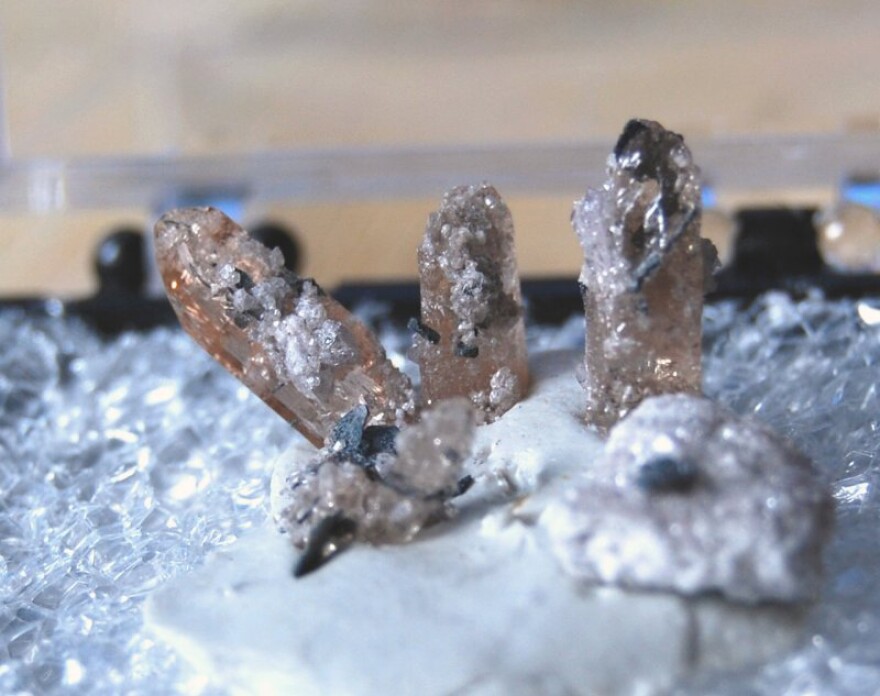Most people could probably name the state bird or the state tree, but what about the state gem? The state grass? State fruit? Do you know why they are important to Utah? Here are just a few of Utah’s State Symbols that you might not have known.
Topaz was named Utah’s state gem in 1969 because of its abundance on Topaz or Thomas Mountain in Juab County. In this area, perfect topaz crystals can be found and collected. This semiprecious gem can also be found in Beaver and Toolee counties. Topaz can be found in a variety of colors, but in the Thomas Range it is known for its sherry hue. When exposed to sunlight, amber colored topaz will often become clear. Topaz collecting is free and open to the public in most areas and could be a great way to get to know Utah a little bit better.
Utah’s state grass was selected in 1990 to be Indian Ricegrass. As you might suspect, indian ricegrass was given its name because of the significance in Native American life. This tough bunchgrass was a common food source and was absolutely crucial to survival when the corn crop failed. It can be found in wet and dry areas throughout the West. Long ago this grass was important for Native Americans; now it is important in fighting wind erosion and grazing cattle.
The cherry did not become the state fruit until 1997 when a group of second graders did their research and petitioned for the fruit to be recognized. Cherry was discovered to be the most economically beneficial fruit for Utah when compared to other fruits like peaches and apples. Both sweet and tart cherries are grown commercially in Utah. Utah is the only state ranked in the top five cherry producing states for both types of cherries. The cherry is native to Asia, but flourishes in Utah’s environment.
The state insect might be a little easier to guess than the state grass and state fruit. Utah is known as the beehive state, so naturally our state insect is the honeybee. When settlers first arrived in Utah they called it Deseret which means honeybee. Honeybees are listed as endangered species, but many Utahns have become “backyard beekeepers” to help these bees survive. Bees might seem insignificant, but are actually the unsung heroes of the world’s food supply. Growing bee friendly plants or becoming a beekeeper yourself are great ways to help Utah’s honeybee thrive.
No matter where in the state of Utah you are, you can learn more about these plants, animals, and rocks and see them in action. As a Chinese proverb says, “Learning is a treasure that will follow its owner everywhere.”
Sound courtesy of Kevin Colver.







